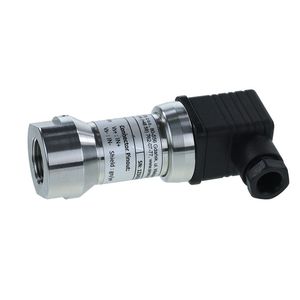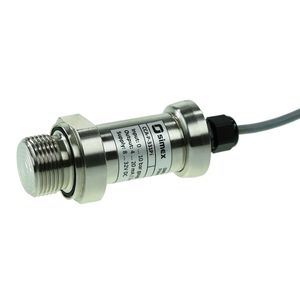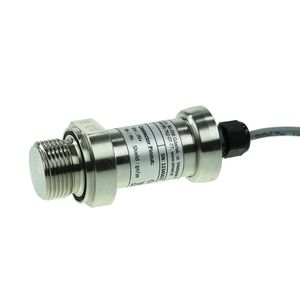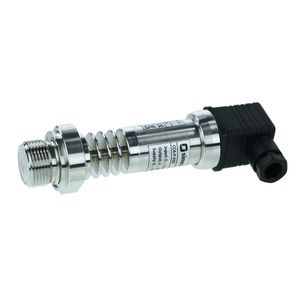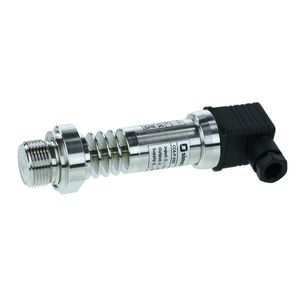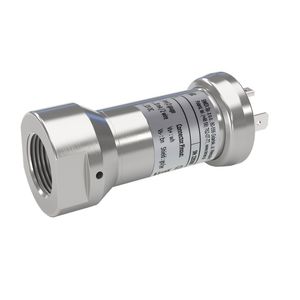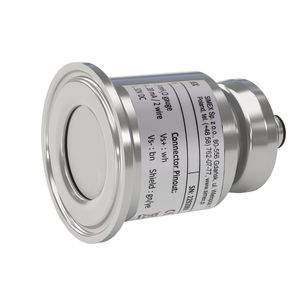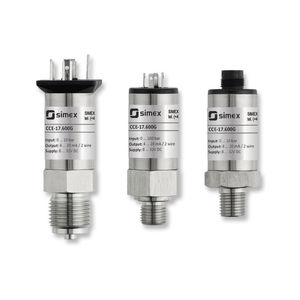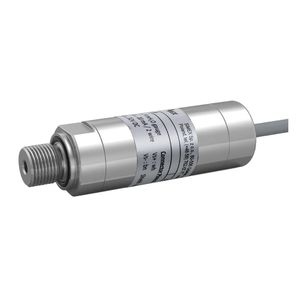
- Company
- Products
- Catalogs
- News & Trends
- Exhibitions
Absolute pressure transmitter CCA-K-331Pmembrane4-20 mA0-10 V
Add to favorites
Compare this product
Characteristics
- Pressure type
- absolute
- Technology
- membrane
- Output
- 4-20 mA, 0-10 V, 0-5 V, current output, voltage output, 2-wire, 3-wire
- Electrical connection
- M12 connector
- Supply voltage
- 24 Vdc, 12 Vdc, 32VDC, 15VDC, 8VDC, 9VDC
- Mounting
- threaded
- Process connection
- G 1/2, M20 x 1,5, G 1, G 3/4, G 1 1/2
- Fluid
- for high-viscosity liquids
- Material
- stainless steel
- Protection level
- IP65, IP67
- Applications
- for OEM, process, for the food industry, for the oil and gas industry, for the plastics industry, for compressors, for engines, for test and process engineering, for the petrochemical industry, for the aeronautical industry, for water treatment, for building automation, for the energy sector, for pharmaceutical applications, for marine applications, for hydraulic applications, for nuclear power plants, for injection molding machines, for the chemical industry, automotive, for boiler, for agricultural applications
- Other characteristics
- compact, precision
- Pressure range
Min.: 0 bar
(0 psi)Max.: 400 bar
(5,801.51 psi)- Precision
0.5 %, 1 %
- Process temperature
Min.: -40 °C
(-40 °F)Max.: 85 °C
(185 °F)
Description
The pressure transmitter CCA-K-331P is suitable for measuring the pressure of viscous and pastymedia, where a totally flush pressure port is re-quired.
As on all industrial pressure transmitters made by SIMEX, you may choose between various electrical and mechanical connections also on CCA-K-331P
Specification
Electrical connection -
Binder 723
cable outlet
ISO 4400
Medium temperature -
-40...+125°C
-10...+125°C
Catalogs
No catalogs are available for this product.
See all of SIMEX Sp. z o.o.‘s catalogsRelated Searches
- Flowmeter
- Volume flowmeter
- Liquid flowmeter
- Measuring device
- Simex pressure transmitter
- Level limit switch
- Simex level sensor
- Liquid level limit switch
- Simex analog pressure transmitter
- Simex liquid level sensor
- Gas flowmeter
- Waterproof flowmeter
- Industrial flowmeter
- Simex waterproof pressure transmitter
- Simex stainless steel pressure transmitter
- Simex membrane pressure transmitter
- Simex analog level sensor
- Compact flowmeter
- Simex level transmitter
- Digital pressure transmitter
*Prices are pre-tax. They exclude delivery charges and customs duties and do not include additional charges for installation or activation options. Prices are indicative only and may vary by country, with changes to the cost of raw materials and exchange rates.







